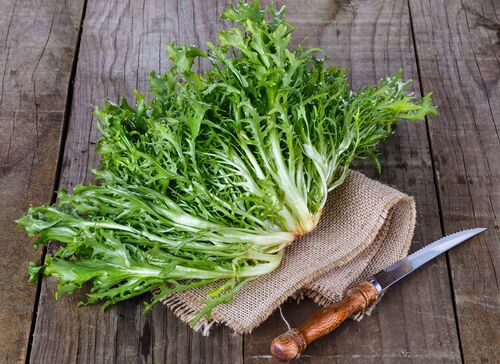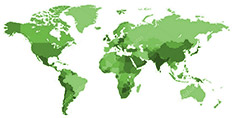Growing Endive

Endive is a somewhat bitter-leafed vegetable and is related to chicory. There are two types of endive. The first is a variety with ‘normal’ leaves and a large head, also called Escarole, or broad-leaved endive. The second variety has curly leaves, also called frisée. Endive can be eaten both raw and cooked. The varieties with the curly leaves are often used in salads, because, besides being tasty, it is also decorative. Endive is very healthy. Home-grown endive is tastier than supermarket endive.
Growing your own endive from seeds
Endive comes from the composite family and has a slightly bitter flavour. You can tell from this that it is related to, for example, chicory and radicchio. There are two types of endive. The first is the normal endive with its broad and smooth leaves that grow in the shape of a head. The second variety is the curly, also called frisée. This has curled, incised leaves and forms loose heads.
Sowing and planting endive
Endive is the perfect vegetable for growing in summer and autumn. It is an undemanding vegetable, grows in any garden soil, does not require a lot of fertilizer, and is highly resistant to pests and diseases. If you sow late, you can harvest fresh endive into autumn or early winter if the weather conditions are right.
Depending on the variety, endive can usually be sown in the garden from mid-May to the end of July. If endive is sown after the longest day (21 June), it often does not flower. Earlier sowing can be done, but is best done indoors. You can also pre-sow earlier outdoors in a greenhouse. When the plants are large enough, they can be transferred to the garden.
Position and soil for Endive
Endive grows best in a sunny, sheltered spot and roots relatively deep. That is why it is wise to loosen the soil a bit before sowing or planting out and to use compost.
How to care of your endive plants?
Endive requires little care. The most important thing is watering. Do not do this on the plant itself, but on the soil around the plant. Remove any brown leaves. Check regularly to make sure the endive doesn't start to flower.
When and how to harvest endive?
Most endive varieties grow relatively slowly. Harvesting can usually be done from August to October and, of course, depends on when it was sown and the weather. Most varieties can withstand light night frost. Depending on the variety, harvest the whole head or the individual leaves.
How to preserve endive?
Fresh endive can be kept in the refrigerator for a few days. Endive can be frozen, but blanch first.
Is endive healthy?
Endive is rich in minerals such as iron and calcium. Furthermore, the vegetable also contains many different vitamins, such as vitamins A, B and C.
Endive seeds in our collection
We have different varieties of endive in our range. Both the regular endive as well as the curled and cut varieties. We also have varieties that are quite frost-resistant, allowing them to be harvested far into autumn.
Tips to grow endive
Endive tends to bloom rather quickly. When it is growing a thick stem in the middle it is time to harvest as soon as you can. You can still eat it within a few days. So check regularly to see if the plants are starting to grow a stem.



